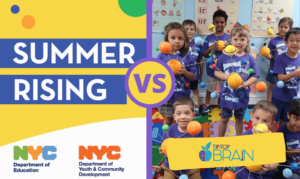No different than the brick-and-mortar classroom, some students and their parents have had less than stellar experiences in a virtual classroom. Why does this happen? Within a single school, the quality of online learning can vary greatly. The Buechner School for Online Governance surveyed students and parents alike to determine what online learning features, or lack thereof, they found most problematic. Amongst those surveyed, it’s worth noting, most students and parents had no chief complaint. However, when further probed, families were able to identify aspects of virtual learning they didn’t appreciate.
The Buechner School for Online Governance compiled lists of parents’ dislikes in the virtual learning experience, below are the five most frequent responses in order:
So let’s talk about them. It’s worth stating which of these challenges are specific to virtual classrooms, and which are not. Barring curriculum, all of these pitfalls are somewhat unique to virtual classrooms more so than traditional classrooms.
More Requirements
By virtue of the kitchen table becoming the de-facto school, in-classroom procedures become at home. Of course, work at home is sort of the point, and strength of virtual learning. However, this doesn’t justify parents’ sense that there are more requirements in virtual classrooms than traditional ones. Ultimately, the burden of online schooling logistics ought to fall on educators, not parents. Although frequent “litmus-testing” of student feelings and performance is necessary in online classes, it need not become a focal point of a course. Ultimately, requirements should be smoothly “baked-in” to the expected participation in class.
Technology
The choice of a virtual learning environment, a web-based platform for the digital aspects of coursework, is nontrivial. Perhaps most importantly, the use of technology should be centralized as much as possible. For instance, using Zoom, Google Drive, and Blackboard, all at once can easily overwhelm students and parents alike. There is a start-up cost for each web service employed in the classroom. Students not only need to make accounts on each platform in order to use them— they need to learn the ins and outs of each platform. If the services aren’t well-integrated, this can make for choppy switching between accounts and services, never mind the possibility of scheduled outages on platforms. Without craftily integrated, centralized, and routine use of the program’s courses employ the risk of frustration and wasted time runs high.
No Flexibility
Simply, things happen. In some sense, teachers who have transitioned online are now managing numerous classrooms as opposed to one. Each of these classrooms are under the jurisdiction of parents. In a brick-and-mortar classroom, common resources offer the same circumstance to all pupils. Take, for example, something as simple as Wi-Fi. Even in courses that rely heavily on web access, if internet usage becomes labored on a school day, it is a commonality. A classroom that has internet connectivity issues has the advantage of comradery in the experience. In distance learning, problematic tech affects individual learners. On a given day, it may only be a few students, making pivots and workarounds now becomes a lot more challenging. For that reason, having reliable, and extremely versatile educators is a key factor in successful virtual learning outcomes. Aside from a concerted effort towards flexibility, there are a few other central guiding principles online educators ought to employ.
Lack of Communication
Of course, educators need to make concerted efforts to keep the lines of communication strong and in-use if they expect the trust of students and parents. Successful virtual learning relies most heavily on high teacher-student interaction. Moreover, in the absence of daily in-person interactions with teachers, communication between teachers and students is paramount. If students and teachers fail to meet and speak often, it’s nearly impossible for students not to become alienated. Without these conversations, how could teachers assess the needs of a particular student? They can’t. There is no substitute for conversation between teachers and students. Fortunately, some learning centers like Tip-Top Brain, recognize the significance of face-to-face communications, and offer an exemplary implementation of virtual courses.
All in all, the strife parents experience in trying to facilitate their child’s online learning experience is very real, but not systematic. Amongst these five most frequent criticisms of online classrooms, all of which can be alleviated by a diligent teacher. None of these grievances are necessarily staples of virtual learning, they’re characteristic of problematic classrooms. Virtual learning, in a funny way, makes parents more keenly aware of defects in teacher-specific course structures.







